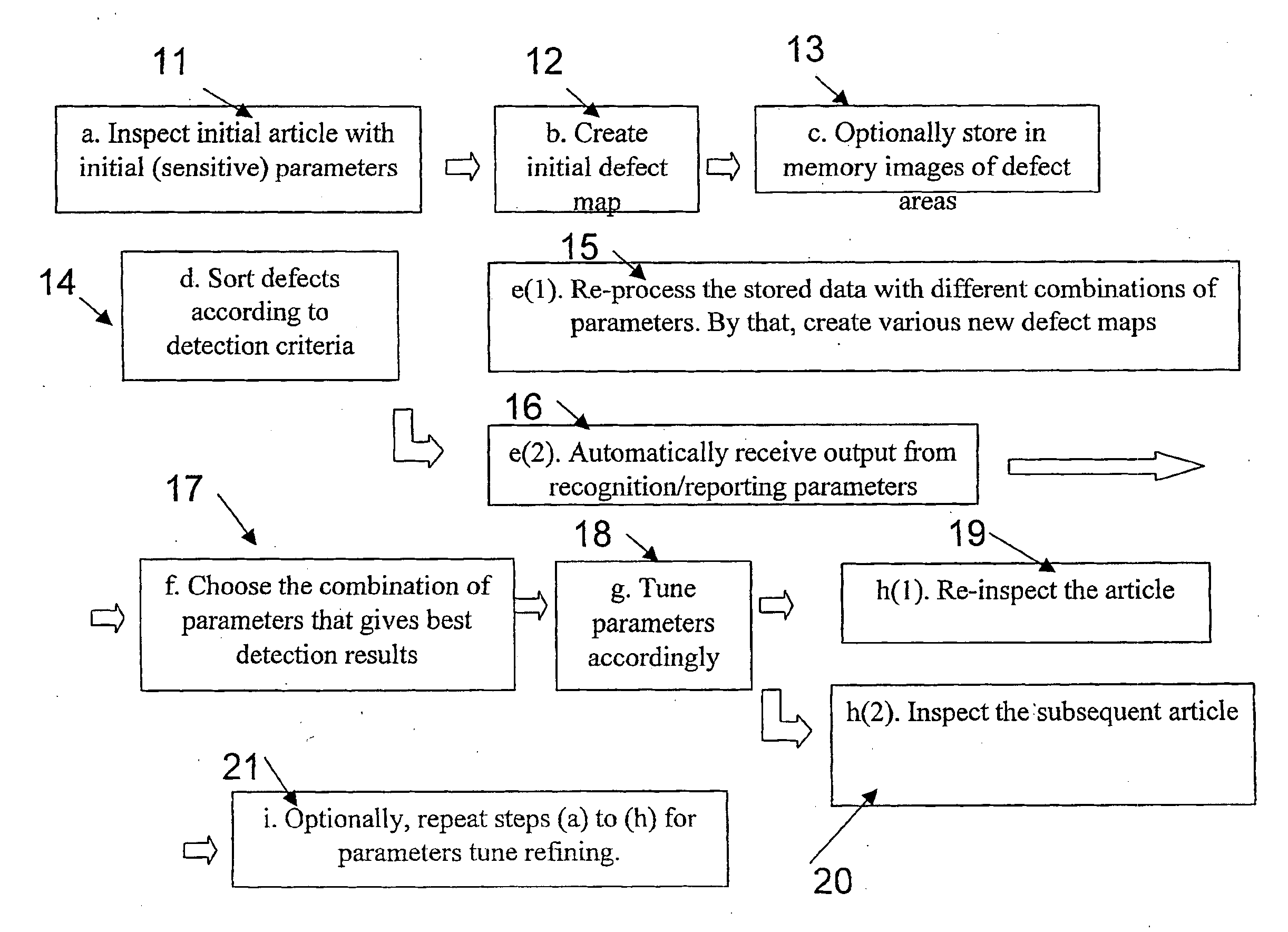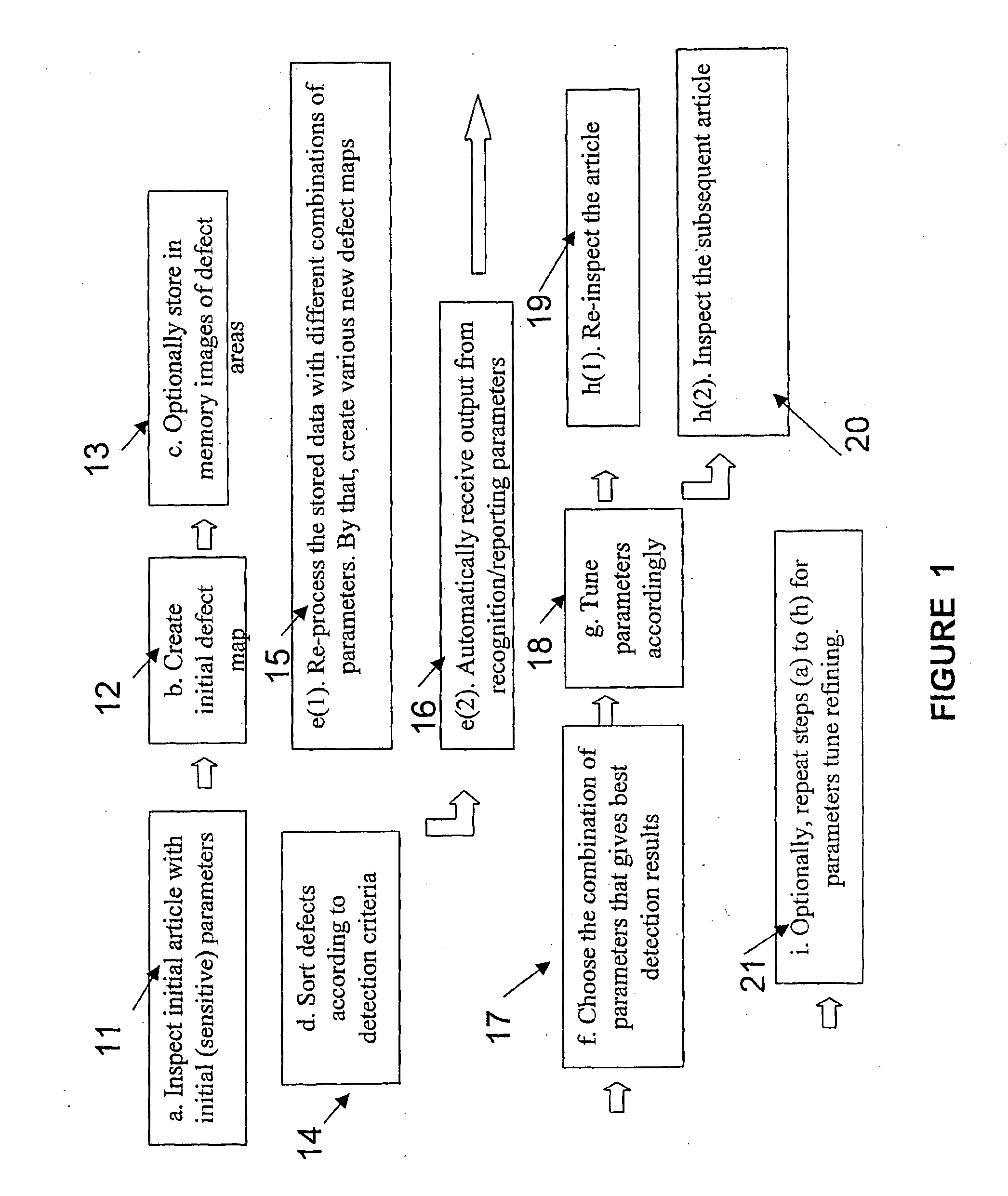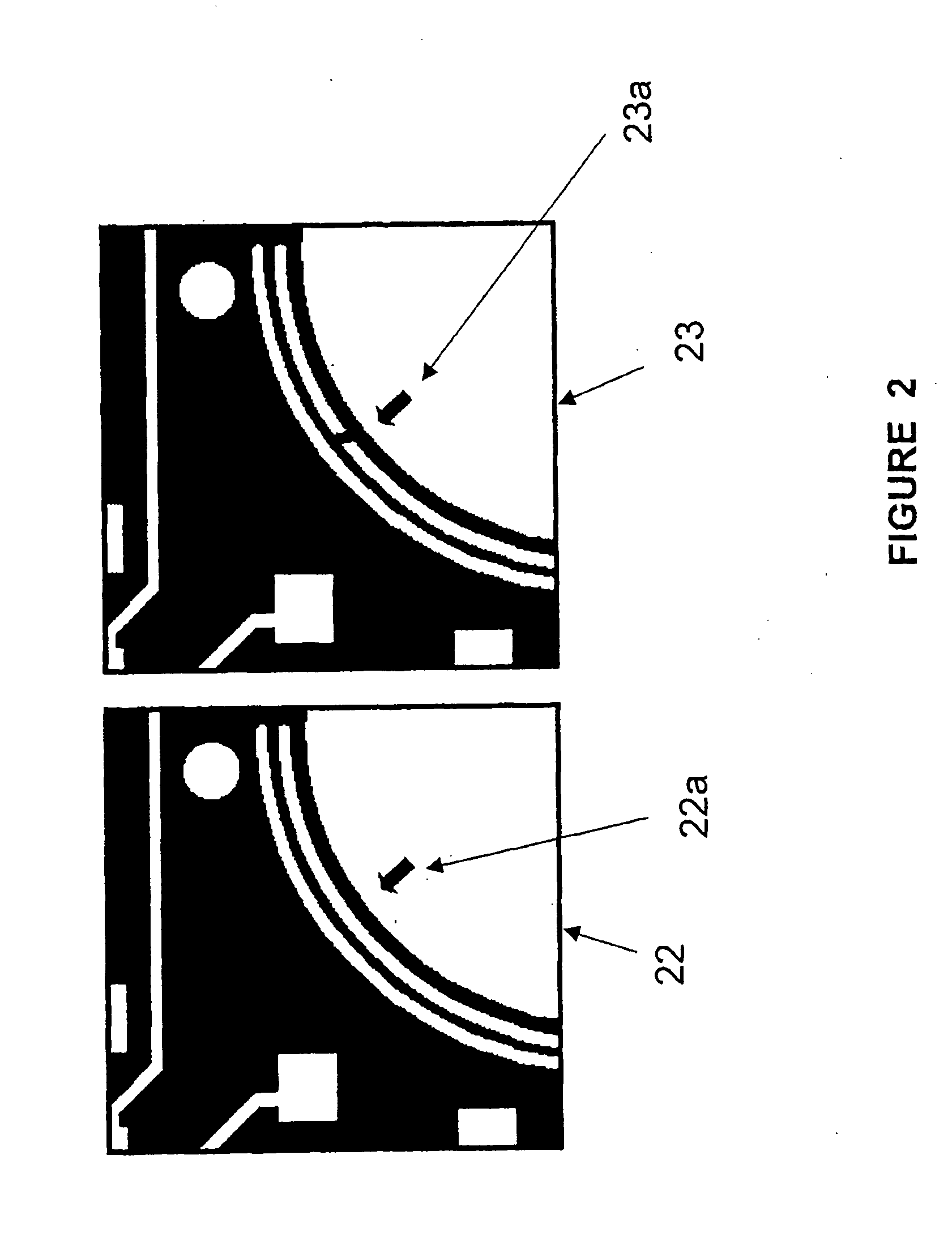Method and System for Automatic Defect Detection of Articles in Visual Inspection Machines
- Summary
- Abstract
- Description
- Claims
- Application Information
AI Technical Summary
Benefits of technology
Problems solved by technology
Method used
Image
Examples
Embodiment Construction
[0032]With reference to the drawings, FIG. 1 illustrates a flow diagram presenting a method for semi-automatic tuning of detection parameters in an automatic visual inspection system. The method is regarded as semi-automatic, as the decision of whether a defect received in the initial defect map is critical or non-critical, is performed manually by the user, preferably an experienced user such as the article's designer or automatically by the system. The flow between process steps is automatically sequenced by a controller.
[0033]In step (a) of block 11, the article, whether the first article in the batch or not, is inspected by scanning with an automatic optical inspection (AOI) system, using initial parameters. These initial parameters may be received either automatically, from initial setup or from default values within the system, or manually chosen from a parameter database. Preferably, a sensitive set of parameters is selected, such that it will result in detection of all criti...
PUM
 Login to View More
Login to View More Abstract
Description
Claims
Application Information
 Login to View More
Login to View More - R&D
- Intellectual Property
- Life Sciences
- Materials
- Tech Scout
- Unparalleled Data Quality
- Higher Quality Content
- 60% Fewer Hallucinations
Browse by: Latest US Patents, China's latest patents, Technical Efficacy Thesaurus, Application Domain, Technology Topic, Popular Technical Reports.
© 2025 PatSnap. All rights reserved.Legal|Privacy policy|Modern Slavery Act Transparency Statement|Sitemap|About US| Contact US: help@patsnap.com



